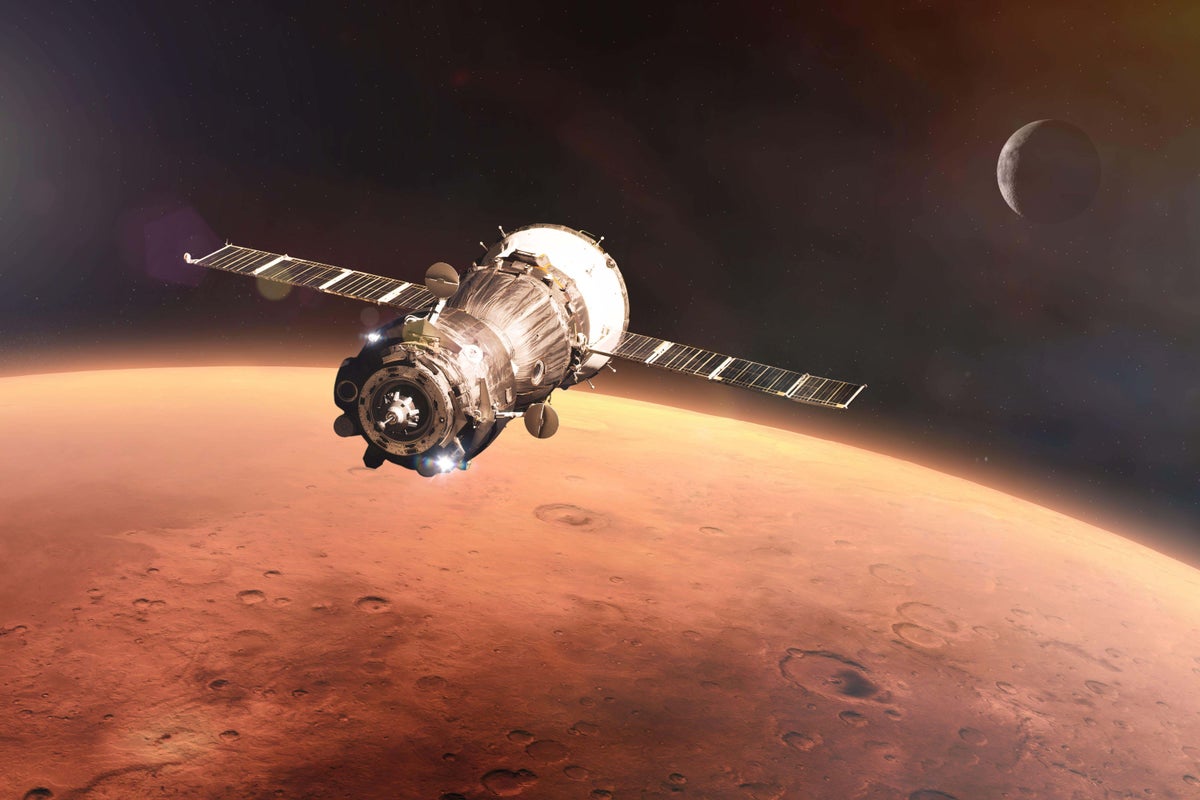Science
NASA’s Mars Discovery Sparks New Hopes for Past Life

NASA has unveiled promising findings from Mars that may provide evidence of past microbial life. Scientists identified distinctive “leopard spot” patterns in clay-rich rocks located at the edge of Jezero Crater, an ancient lakebed that was once nourished by Martian river systems. This area is being explored by the NASA Perseverance Rover, which has made significant strides in understanding the planet’s geology.
These mineral patterns resemble those created by microorganisms on Earth, igniting renewed interest in the possibility of life on Mars. While the scientific community remains cautious, the discovery has sparked discussions about whether life could have existed on the planet in its early history or may still survive in hidden niches today.
Insights into Martian Conditions and the Search for Life
The discussion around Martian life hinges on understanding the planet’s past and present conditions. Early Mars shared similarities with Earth, including atmospheres and magnetic fields that protected both planets from harmful solar radiation and allowed for the presence of liquid water. These conditions are believed to have been crucial for the emergence of life on Earth, raising the question of whether similar processes could have occurred on Mars.
As Mars evolved, it lost its magnetic field, leading to a decline in atmospheric protection. This shift exposed the Martian surface to increased solar radiation, resulting in a colder and drier environment. Consequently, scientists do not anticipate finding living organisms on the surface, which is deemed too inhospitable for life as we know it. Instead, attention is directed toward the potential for microbial life existing in protected underground or icy regions.
Promising sites for this research include caves, the polar ice sheets, and deeper underground layers. These environments have Earth analogues that support microbial ecosystems, suggesting that if life once began on Mars, it could still persist in extreme conditions.
The Subsurface: Mars’s Best Hope for Life
The Martian subsurface, ranging from a few metres to several kilometres deep, is considered a potentially stable habitat. While surface conditions have been harsh, the deep subsurface might offer more hospitable environments where life could survive. On Earth, many microorganisms thrive underground, often residing in rock crevices and forming ecosystems reliant on minerals for energy.
Recent analyses have detected methane on Mars, a byproduct of some microbial processes. However, the presence of methane alone does not confirm life, as there are non-biological processes that can also generate this gas. The viability of a deep biosphere on Mars depends on several factors, including the availability of liquid water, energy sources, and tolerable temperatures.
Speculation about subsurface liquid water continues, with some researchers suggesting it could facilitate chemical reactions supportive of microbial life. The unique conditions on Mars, such as its lower gravity, might allow for more porous rocks, potentially housing microbial colonies. Additionally, the cooler interior could mean that habitable temperatures could extend deeper than on Earth.
To explore these possibilities, scientists study Earth’s extreme environments that share characteristics with Mars. Sites like the Atacama Desert, Lake Salda in Turkey, and Utah’s Pilot Valley serve as valuable research locations. These investigations aim to illuminate how life could exist or be preserved under Martian conditions.
Controlled laboratory experiments also play a crucial role. Scientists use specialized “Mars chambers” to simulate the planet’s atmosphere, radiation levels, and temperature variations. These combined efforts are vital in refining our understanding of the potential for life on Mars.
Currently, no definitive evidence confirms the existence of life on Mars, either in the past or present. The patterns observed by NASA’s rover represent the most promising indicators yet, but they remain inconclusive. If life currently exists on Mars, it is likely not widespread; Earth-based observations have not detected it.
Significant opportunities for further exploration are on the horizon. The upcoming European Space Agency (ESA) ExoMars Rosalind Franklin rover is expected to drill up to two metres below the Martian surface, offering a chance to investigate the shallow subsurface where living microorganisms might dwell.
Drilling deep on Earth poses considerable challenges, and scientists acknowledge the vast unknowns regarding subsurface life on our own planet. Exploring the deep Martian subsurface presents an even greater scientific and engineering challenge, yet it could be key to unlocking the mysteries of potential life on Mars. The quest for answers continues, fueled by the tantalizing possibility that we may someday uncover evidence of life beyond Earth.
-

 Health3 months ago
Health3 months agoNeurologist Warns Excessive Use of Supplements Can Harm Brain
-

 Health3 months ago
Health3 months agoFiona Phillips’ Husband Shares Heartfelt Update on Her Alzheimer’s Journey
-

 Science2 months ago
Science2 months agoBrian Cox Addresses Claims of Alien Probe in 3I/ATLAS Discovery
-

 Science2 months ago
Science2 months agoNASA Investigates Unusual Comet 3I/ATLAS; New Findings Emerge
-

 Science1 month ago
Science1 month agoScientists Examine 3I/ATLAS: Alien Artifact or Cosmic Oddity?
-

 Entertainment5 months ago
Entertainment5 months agoKerry Katona Discusses Future Baby Plans and Brian McFadden’s Wedding
-

 Science1 month ago
Science1 month agoNASA Investigates Speedy Object 3I/ATLAS, Sparking Speculation
-

 Entertainment4 months ago
Entertainment4 months agoEmmerdale Faces Tension as Dylan and April’s Lives Hang in the Balance
-

 World3 months ago
World3 months agoCole Palmer’s Cryptic Message to Kobbie Mainoo Following Loan Talks
-

 Science1 month ago
Science1 month agoNASA Scientists Explore Origins of 3I/ATLAS, a Fast-Moving Visitor
-

 Entertainment2 months ago
Entertainment2 months agoLewis Cope Addresses Accusations of Dance Training Advantage
-

 Entertainment3 months ago
Entertainment3 months agoMajor Cast Changes at Coronation Street: Exits and Returns in 2025









